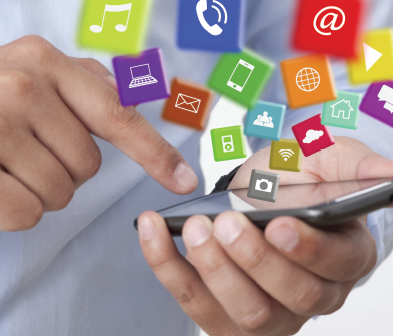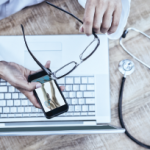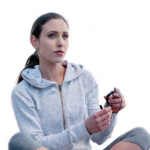
goldyg / shutterstock.com
CHICAGO—Suleman Bhana, MD, a rheumatologist at New York-based Crystal Run Healthcare, calls himself a “technology nerd,” but judging by his review of tech tools at the 2018 ACR/ARHP Annual Meeting, you don’t have to geek out to embrace technology in your rheumatology practice. You just have to like simplicity and saving money.
“We have a tool with us at all times, something that’s always in our pocket and rapidly advancing that we could use for patients,” he said. “And that is our smartphone.”
The smartphone, Dr. Bhana said—he held up his iPhone X as proof of his tech-nerd qualifications—is helping harness patient-derived data for research studies and is interfacing with the modern devices (e.g., ultrasound devices that can plug into a phone) gradually replacing older, bigger and more expensive technology.
Technology in medicine should be cost effective, not interrupt workflow or patient care, be easy to use and provide a real impact on patient outcomes, he said. “Ideally, the best technology should incorporate all of these principles.”
Hardware Tools
Dr. Bhana noted several hardware tools rheumatologists might find particularly helpful, including:
- The OlloClip Macro Pro Lens, which clips to a phone’s camera to provide up to 21x magnification. Rheumatologists can use it to perform a nailfold capillaroscopy that reliably distinguishes between primary and secondary Raynaud’s phenomenon. “The advantage of using this on your phone is that you can still do whatever you are normally doing on your phone anyway, so you can still take pictures, take video, utilize your digital zoom,” said Dr. Bhana, who reported no disclosures about any of the devices he mentioned. The device (now available only for the iPhone) costs $64, compared with a DermLite device that costs $495 and does not magnify as strongly.
- The FLIR ONE Thermal Camera for smartphones, which attaches to a smartphone or tablet and combines a thermal camera and a standard camera to make a dual image, detecting temperature differences as small as 0.1ºF. It is compatible with iOS and Android, and costs $299 or $399 (depending on the model), compared with a traditional thermal imaging system that can cost thousands.
- The Gosky Universal Cell Phone Adapter Mount, which lets you attach your phone to your microscope for image capture. “Your smartphone becomes the image-capture equipment, and you can still capture video and utilize the phone’s digital zoom as well,” Dr. Bhana said. You can also wirelessly stream images to others to obtain their opinions. The mount costs $24.99, compared with more than $1,000 for a microscope camera.
‘Your smartphone becomes the image-capture equipment.’ —Dr. Bhana
Software Tools
In the software realm, he suggested these smartphone apps:
- A series of apps developed by 3D4Medical offer three-dimensional, real-time-rendered anatomical images based on magnetic resonance imaging and computed tomography scan reconstructions. Users can “cut” a model—say, a 3D image of a hand—to see a cross-section and then can strip away layers. All of the apps (which include Hand and Wrist Pro, Shoulder Pro, Spine Pro and others) have videos embedded to explain pathologies or procedures. Video explanations start with a normal anatomy and progress through pathologic changes. Many patients can “at least get an idea of what could happen if management doesn’t work,” Dr. Bhana said. The apps cost roughly $8–$60 and are available on iOS, Android and OSX.
- DAS Calculator, an app that allows users to quickly enter information to obtain such scores as Disease Activity Score 28, Simple Disease Activity Index, Crohn’s Disease Activity Index or cumulative and weighed RAPID3.
- Lose It!, a weight loss and diet app. With many rheumatic diseases improved by diet and lifestyle, Dr. Bhana said he recommends Lose It! to patients often. “Trying to tell patients, ‘Well, go home and lose some weight,’ is for the most part pretty much unhelpful,” he said. With the app, users can set goals, and the app suggests plans to meet the goals. Then users can enter what they eat, and they can compete with family, friends and other users to see who can reach their goals fastest. It can also link with wearables for step tracking and more, Dr. Bhana said.
- Calm, named Apple’s app of the year for 2017, helps with meditation and mindfulness-based stress reduction, which has been shown to help with chronic pain, fibromyalgia, mood and cognitive disorders. It’s mainly an audio-based app, with a bit of a visual component, offering 10- to 12-minute sessions per day. Dr. Bhana said, “It’s one of my favorite apps. “It’s very simple to use, very low threshold, and most patients seem to respond quite positively to it.”
Thomas R. Collins is a freelance writer living in South Florida.

